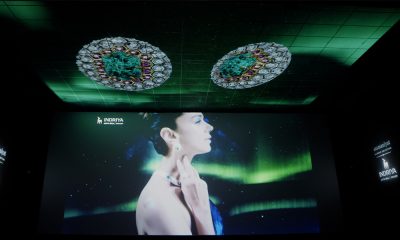Digital Display
LED warranty: A guide to understand your coverage options
Sanket Rambhia, CEO of Xtreme Media, shares a ready reckoner on the aspects to be looked into when evaluating an LED warranty.
With the rise of LED technology and its widespread adoption, the importance of a strong LED warranty has grown. A warranty on LED displays provides customers with the assurance that the product will be free from defects and perform as intended. This has gained a lot of relevance in today’s era as it provides peace of mind and can help reduce the financial impact of any potential failures. A warranty can also indicate the quality and reliability of the product, with longer warranties often being offered on higher quality products.

Maintain a checklist when it comes to LED warranty
- Where is the warranty coming from?
- Is the OEM warranty different from partner warranty?
- What is the track record of the warranty provider?
- Is it a comprehensive warranty or just providing extra spare parts?
Importance of choosing the right company for your LED display
Choose a company with a good reputation and a proven track record of providing high-quality LED displays. Make sure the warranty covers the most important components of the LED display and the period of coverage is sufficient for your needs. Ensure the warranty provider has sufficient service capabilities or centres to provide prompt and reliable technical support. Consider the cost of the warranty in relation to the cost of the LED display. Look for a warranty provider that provides complete coverage. Ensure the warranty provider has a straightforward claims process and a quick turnaround time for resolving claims.
Difference between manufacturer warranty and partner warranty
A manufacturer warranty is offered by the company that designs, develops, and sells LED displays. It typically covers defects in materials and workmanship and may include repair or replacement services for the display during the warranty period.
A partner warranty, on the other hand, is offered by a company that partners with the manufacturer of the LED display to provide additional support services, such as installation, maintenance, and repair. The partner warranty may include additional coverage beyond the manufacturer warranty, such as extended coverage periods or on-site repair services.
The key difference between a manufacturer warranty and a partner warranty is the entity responsible for providing the warranty coverage and support services. Since OEMs have a direct stake in the quality of their products, they are more likely to honour their warranty commitments and provide reliable service to their customers. Hence OEM warranties tend to have an upper hand over partner warranties because they offer longer warranty periods and more reliable service.
However, identifying the source of the OEM warranty is important. The OEM warranty comes in the form of a warranty card or a warranty certificate along with the LED display.
Different levels of warranties
LED display manufacturers typically offer different levels of warranty coverage based on factors such as the type of product, its intended use, and the specific components that are covered. Some common types of warranty coverage include:
- Limited Warranty: This type of warranty typically covers defects in materials and workmanship for a specified period, usually 1 to 3 years. The regular wear and tear of the display and Periodic Maintenance Service (PMS) is not covered in this type of warranty.
- Back to Bench Warranty: In this type of warranty, the client needs to visit the OEM’s location to return or repair any module and it is the client’s responsibility to transit the materials both ways.
- On-site Limited Warranty: This type of warranty provides for repair or replacement of defective parts at the customer’s location. However, it does not include regular wear and tear of the display and PMS.
- Comprehensive On-site Warranty: This type of warranty covers both the cost of replacement parts and the labour required to install them. The warranty also includes PMS.
- Annual Maintenance Contract: This is given after the expiry of the warranty to take care of the regular wear and tear and the PMS of the display. However, this does not cover the cost of the replacement of parts in case of any defects in materials and workmanship.
The specifics of each type of warranty can vary from manufacturer to manufacturer, so it’s important to carefully review the terms and conditions of any warranty offered with a LED display before making a purchase.
Track record of the warranty provider
Having a proper track record of the LED warranty provider is important because it provides an insight into the reliability and credibility of the company. This information can help you make an informed decision about the warranty and ensure that you receive proper coverage if you need it. Knowing the company’s history, customer feedback, and its ability to fulfil warranty claims can protect your investment in the long run.
Conclusion
In conclusion, an LED warranty is an important aspect to consider when purchasing LED displays. Understanding the types of LED warranty, length of the warranty, coverage, claims process, etc., can help you make an informed decision and ensure that you are covered in the event of any defects or malfunctions. So, be sure to take the time to read and understand the LED warranty T&C before making a purchase.
-

 Innovative Use
Innovative UseXiaomi India’s gold bar prank for Redmi Note 14 Pro 5G champagne gold launch
-

 OAC
OACJaikishin Chhaproo of ITC Limited joins insightful lineup of panelists at OAC 2025
-

 Campaigns
CampaignsStarbucks brews a visual delight with 3D anamorphic campaign in Bangalore
-

 OAC
OACRaghav Anand, Partner at EY to speak at OAC 2025























